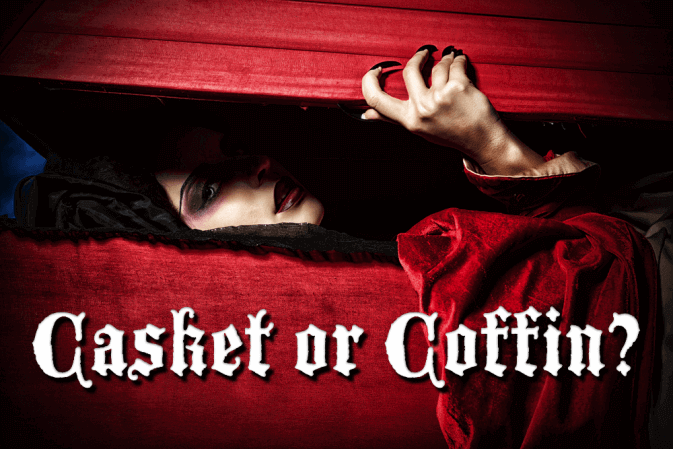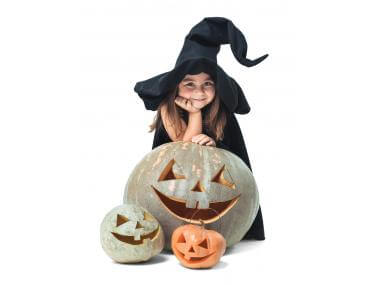Casket or Coffin?
Halloween is just around the corner, so make sure you get your terminology right: Are your lawn decorations caskets or coffins?
A reader named Stephen P. wrote, “I would love for you to do a show or newsletter on ‘casket’ and ‘coffin.’ Are they interchangeable? What are their origins? I just read a book (Two For the Dough by J. Evanovich) in which these two words were used often. It made me wonder.”
Coffins and caskets are both boxes in which people are buried. What differs is the shape. A coffin is wider in the middle and narrower at the ends. It’s the shape you often see of the boxes standing on end where vampires sleep in old movies or of the lawn decorations you can buy for Halloween. Caskets are rectangular and are usually larger and more expensive than coffins.
The first time coffin is used to describe a burial box in the Oxford English Dictionary is in 1525, although the dictionary notes that the French version (cercueil) appeared around 1330.
Casket is a more recent word and doesn’t appear in the corpse-box sense until 1849 in America.
The origin of the word casket is unclear. One theory is that it originally referred to a box for jewels and may come from the Old French word casse, which meant “box” and which took a -tte ending (cassette) to mean “little box.” However, the OED says little evidence exists to support this origin story.
The origin of the word coffin is more clear: It came from the Greek word kóphinos (κόϕινος) which meant “basket.”
In summary, coffins came first and are shaped more like a body—like the boxes you see in Halloween decorations or vampire movies. Caskets are rectangular boxes that came later.
Image courtesy of Shutterstock.







